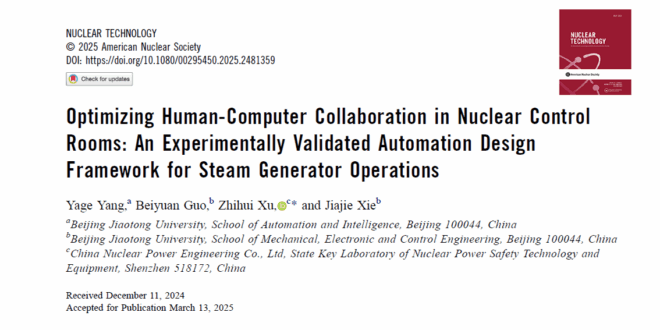With the improvements in information technology, the nuclear power instrumentation and control system has shifted from traditional instrumentation to digitalization and now faces the challenge of advancing toward intelligence. Greater emphasis is placed on human-computer collaborations in advanced nuclear power plants, and automation design significantly impacts the safety and efficiency of control room diagnosis and actions.
In this study, we constructed a decision ladder for operators in the main control room that is divided into different levels of automation (LOA) based on the information processing activities and knowledge states of the decision ladder, and proposed a taxonomy of the degree of automation (DOA) for operational control tasks. Finally, a simulation experiment of a steam generator water vapor control task was conducted to compare the impacts of different DOAs on operator performance.
We found that D7 (consensual operation) and D8 (high automation) had the best combined effectiveness. This study established a novel human-automation collaboration framework through its LOA taxonomy and DOA schemes, providing systematic methodology for intelligent nuclear control system upgrades, providing a valuable reference for LOA calibration and DOA quantification for existing automation technology. Experimentally validated D7 and D8 schemes with optimal performance can provide a theoretical basis for improving the operational safety and efficiency of intelligent nuclear power plants and practical solutions for adapting existing automation technologies.
Yage Yang, Beiyuan Guo, Zhihui Xu.Optimizing Human-Computer Collaboration in Nuclear Control Rooms: An Experimentally Validated Automation Design Framework for Steam Generator Operations.NUCLEAR TECHNOLOGY,https://doi.org/10.1080/00295450.2025.2481359
 复杂系统人因与工效学研究所
复杂系统人因与工效学研究所

